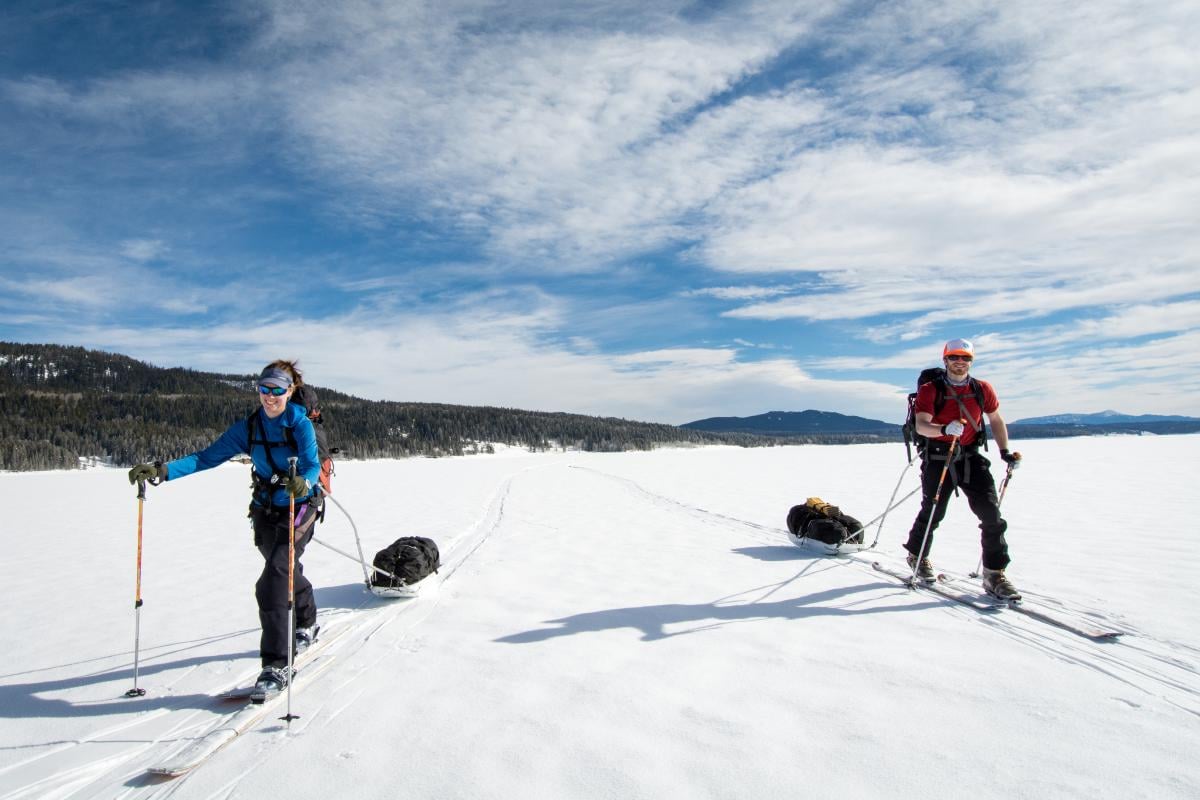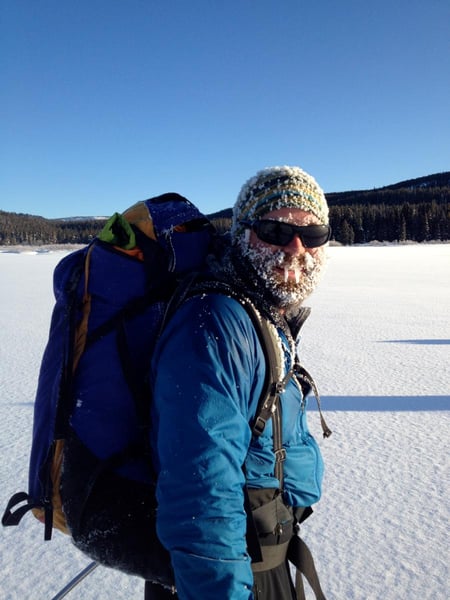Winter is a time for all sorts of amazing activities—skiing, snowboarding, curling—but cold weather brings its own special hazards. One of the most common first aid situations you’ll see when it gets cold is frostbite.
What Is Frostbite?
Frostbite is the freezing of tissue, commonly seen on fingers, toes, and ears, which causes cellular damage as ice crystals between cells rub together or blood clots stop circulation in small blood vessels. It can be caused by cold stress, low temperatures, moisture, poor insulation, contact with supercooled metal or gasoline, or interference with blood circulation.
Frostbite is classified into stages: superficial frostbite, partial-thickness frostbite, and deep or full-thickness frostbite (many experts classify frostbite only after it has thawed and the extent of damage is apparent). While frostbite isn't life-threatening, it can have serious results, such as loss of function and amputation.
What Is The Best Prevention For Frostbite?
When it comes to safeguarding yourself against frostbite during winter adventures, understanding and implementing effective prevention strategies is crucial. This guide outlines some of the best practices for frostbite prevention. Remember, the right knowledge and preparation can make all the difference in keeping your winter experiences enjoyable.
Here are 7 ways you can prevent frostbite when you're adventuring outside in winter (many of these principles are also helpful for preventing hypothermia).
1. Cover Exposed Skin
Exposure to cold temperatures and biting wind is an easy way to get frostbite. By covering up with wool blend socks, jackets, pants, neck gaiters, hats, and mittens, you will protect yourself from the cold and also help your body retain its heat.
Avoid unnecessary exposure to freezing temperatures and wind chill by wearing layered clothing that provides good insulation while allowing moisture to escape. The inner layer should wick moisture away from the body, the middle layer should provide insulation, helping to conserve body heat, and the outer layer should be windproof and waterproof.
2. Avoid Restrictive Clothing
While it's essential to layer up against the cold, it's equally important that your clothing doesn't become a hindrance to your body's natural defense mechanisms.
Good blood flow is essential for maintaining body heat. Tight clothing, tightly laced boots, or remaining too long in a cramped position can restrict your blood circulation, making it difficult to keep your body warm. Overly tight clothing can also limit your range of motion, making it harder to stay active – a crucial factor in generating body heat.
Opt for clothing that fits well – snug enough to trap body heat but loose enough to allow layers underneath and not impede blood flow. Pay special attention to areas like the waist, wrists, and ankles, where tightness can often go unnoticed.
When it comes to boots, the fit should be comfortable enough to wiggle your toes. Remember, your feet may swell slightly in colder temperatures, so there should be enough room to accommodate this without constricting circulation.
3. Keep Your Core Warm
Your body prioritizes keeping your vital organs warm.
When your core (torso) is warm, your blood circulates easily throughout your body. But, when your core body temperature drops, your body tries to protect your vital organs by restricting blood flow to your extremities, leaving them susceptible to frostbite.
Keep your core warm by wearing several layers of non-cotton clothing and keeping yourself moving to maintain circulation when you’re in a cold environment.
4. Stay Dry
It’s easy to get wet when you’re playing outside, usually from sweating or from getting snow in your boots and under your layers. But having wet clothing and skin makes you much more susceptible to the cold, increasing the risk of frostbite.
Avoid getting too sweaty by wearing appropriate, moisture-wicking layers. Keep snow out by wearing gaiters over your boots and keeping jackets zipped. Change wet clothing as soon as possible.
5. Pay Attention to Your Extremities
It's easy to ignore early signs of frostbite, such as numbness, changes from your natural skin tone to white, pale, or waxy, or a tingling, stinging sensation in the extremities. This numbness can creep in subtly, and the tingling sensation is your body's way of signaling that it's struggling to maintain warmth in these areas.
Your extremities include not just fingers and toes, but also ears and nose. These areas are often the first to experience the detrimental effects of extreme cold due to their distance from the core of the body.
Regularly check your hands, feet, nose, and ears for any signs of discoloration or frostbite. Wiggle your fingers and toes to keep the blood flowing. If you notice numbness, immediately take steps to rewarm. This can involve gently warming the area with skin-to-skin contact (ex: putting your cold hand in your armpit or on your belly), moving to a warmer environment, or using warm water (not hot water).

6. Monitor Yourself and Your Friends
It can be difficult for someone to tell whether their own nose is cold or has gone numb. Observe your group and check in with them regularly when you're in a cold environment. When out in very cold weather, staying vigilant about your own condition and that of your companions is crucial for frostbite prevention.
Regular self-checks are essential – periodically touch your face, particularly the nose and cheeks, to detect numbness or extreme cold. Using portable mirrors can help in self-assessment, and open, frequent communication about each member's condition should be encouraged.
Employing a buddy system within your group helps make sure no one's condition goes unnoticed. Each pair should be responsible for observing each other, looking out for telltale signs of cold injuries such as pale or white patches on the skin, especially on the face.
If any signs of frostbite, such as numbness or skin discoloration, are observed, immediate action is necessary. Cover and gently rewarm the affected areas, using warm water, warm clothing or body heat, and seek shelter to move the person to a warmer environment if possible.
Carrying extra warm gear like insulated hats and gloves can be a lifesaver in such situations. Educating your group on recognizing and responding to frostbite symptoms can significantly enhance safety for everyone involved.
7. Be Proactive About Staying Warm
The line between cold and “too cold” is thin, and has high consequences if you don’t stop soon enough to warm up when you start getting cold. To avoid frostbite, take care to avoid the 'Too Cold' Threshold!
Be proactive in your approach to staying warm. Don't wait until you're shivering – a sign that your body is already struggling to maintain its temperature. Instead, take preemptive steps like adding an extra layer before you feel cold or taking a break to have a snack.
Take proactive warming measures. If you're getting cold, take action steps to get warm as soon as possible.
- Change Out of Wet Clothing: Wet clothing significantly reduces your body's insulation. If you're damp or wet, change into dry clothes as soon as possible.
- Keep Up Light Physical Activity: Engage in mild to moderate physical activity to generate body heat. This can be as simple as brisk walking, jumping jacks, or even doing squats. Be cautious not to overexert yourself to the point of sweating, as this can make you colder in the long run.
- Eat High-Energy Foods: Consuming high-energy snacks can help your body generate heat. Foods high in fats and carbohydrates are particularly effective.
- Hydrate in Advance: If you can, ensure you are well-hydrated before heading out into cold environments. Being hydrated beforehand can provide a good foundation for maintaining warmth and preventing frostbite. In cold weather, signs of dehydration can be less noticeable. Look out for symptoms like fatigue, dizziness, or confusion, and increase your fluid intake if you experience these.
- Keep Hydrating: Hydration is just as important in cold environments as it is in hot ones. By staying hydrated, you can significantly enhance your body's ability to withstand cold temperatures and reduce the risk of frostbite.
Learn How to Prevent and Treat Frostbite with NOLS
Gain invaluable skills in preventing, identifying, and treating frostbite, particularly in remote and cold weather wilderness settings, with NOLS Wilderness Medicine courses.
Our courses delve deep into the intricacies of frostbite - from the earliest signs to the more severe frostbite - and equip you with the knowledge to make critical decisions in challenging environments.
Through a blend of theoretical learning and practical, hands-on training, NOLS Wilderness Medicine courses emphasize real-world scenarios, teaching you not only to recognize the onset of frostbite and other cold injuries swiftly, but also to implement effective treatment strategies on the affected area when frostbite occurs, helping to prevent permanent skin damage. These skills are particularly vital in remote locations where medical assistance may not be readily available.
Editor's note: Post updated 2/7/2024
Written By
Molly Herber
Molly is a NOLS instructor and writer. She loves the smell of her backpack and does her best writing before 7:00 am. When she's not scouting the next post for the NOLS Blog, she's running and climbing on rocks in Wyoming. Follow her on Instagram @mgherber




